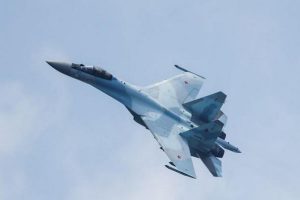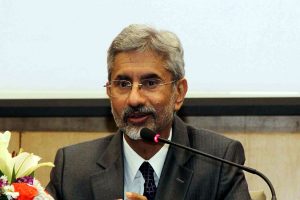Indo-Iranian relations are civilisational, and it needs to be assessed beyond the filters of the recent ‘Hijab’ riots, Indo-Pak dimensions, Iranian Revolution of 1979 or even the constant churn and realignment in geopolitical ‘blocs’ that has coalesced India-US interests in recent years.
It is a relationship that has overcome and thrived many symmetric and asymmetric pressures borne out of the specific challenges that each nation has faced, intermittently.
Advertisement
Even when one of the two nations has adopted a certain posture to the detriment of the other’s preference, there has always been a context of necessity attached to the same.
Rarely had the situation deteriorated to levels of permanent fracture, as the underlying benefit of doubt on the reassuring ‘intentions’ of the other was always presumed, despite the odd discomfiting decision taken unilaterally.
Oddly enough, modern India’s avowed secularity has played a major role in warming emotions in Jomhuri-ye-Eslami-ye Iran (Islamic Republic of Iran). As the principal ‘voice’ of the Shiite strain within the Ummah ~ Iran is highly sensitive and aware of the treatment meted out to co-Shias, even in ostensibly Muslim countries like Saudi Arabia, Pakistan, Syria etc., where they are a minority. Comparatively, the narrative of the Shias in India, in the Shia-dense enclaves like Lucknow, Kargil etc., suggests a very different picture.
Historical exchanges between the ancient lands of Persia and Hindoostan is exemplified by the case of no less than the ancestors of Ruhollah Khomeini himself, who trace their settlement to the Awadh region, before migrating back to Najaf.
The fact that the modern landmass of Iran and India is separated by Pakistan, which is bitterly divided on sectarian lines wherein the Shias are routinely diminished and persecuted, makes Tehran view Delhi very generously, as opposed to Islamabad.
The restive tinderbox of Afghanistan was another area where the Indian and Iranian sensibilities matched and collaborated. All of this led to Iran breaking ranks from majority opinion in bodies like OIC (Organisation of Islamic Countries) on issues like Kashmir, to take a position in favour of India. Delhi too pushed as much as it could to explain and contextualise its unique relationship with Tehran, when Washington DC was breathing down the necks of global capitals to severe ties with Iran. In its own measured manner, Delhi did express explicit concern on Donald Trump’s unilateral tearing up of the Iran Nuclear Deal or Joint Comprehensive Plan of Action (JCPOA) ~ even if larger stakes and considerations ensured that there was a limit to what Delhi could express or achieve in supporting Tehran.
Today, with a more reasonable dispensation in power on Capitol Hill, with President Joe Biden having personally committed to consider the reinstallation of the Iran Nuclear Deal, Delhi can afford to bat on behalf of Iran, yet again.
Therefore, India came out in support of the full and effective implementation of resolution 2231, which terminates the United Nations resolution on Iran’s nuclear policy, and instead urges dialogue and diplomacy towards an early resolution of differences and return to full implementation of the Joint Comprehensive Plan of Action (JCPOA).
Addressing the UN Security Council’s meeting on non-proliferation, India’s permanent representative Ruchira Kamboj nuanced India’s stand that pivoted to the decisioning by the independent body of watchdog agency, IAEA (International Atomic Energy Agency), as opposed to the independent and unilateral whims and fancies of any one vested individual or sovereign.
She nudged the argument by stating, “India values the efforts of the IAEA to implement the Agency’s verification and monitoring mandate. We take note of the recent reports of the Agency, which were also considered at the IAEA Board of Governors meeting recently.” This move augurs well for the Iranian case of lifting the crippling sanctions, especially as they were slammed with a sense of impunity and disdain.
India has many strategic levers, investments and punts with Iran that need reenergizing, and therefore a visible stand in favour of Iran may augur well for the future.
Arabia rolled-out the red carpet for Chinese President Xi Jingping and signaled an unmistakable red flag to Washington DC, especially when the Saudis were playing hardball to the American urge to increase oil production. It is the sort of aggressive counter balancing that the young Saudi Prince Muhammad Bin Salman (MBS) is not beyond considering.
The post-Trump era has seen a bit of a frosty air between the Sheikhdoms and Washington DC and cozying up to Beijing is an effective way of cocking a snook at the Americans.
Both the Sheikhdoms and Israel are united in their opposition to Iran owing to sectarian and political reasons; therefore, Tel Aviv and the Arab capitals would be at the forefront of denying the reinstallation of the Iran Nuclear Deal.
The United States could also give a powerful countersignal by engaging with Tehran, as it knows fully well that beyond trade and commerce, there is no way that China could ever guarantee security to the Sheikhdoms. Trade is one thing, security another. Thus, Indian relations with Iran need not be subject to a ‘zero sum game’.
India needs to tread its own path as it has equally healthy relations with the Sheikhdoms and need not conflate the same to its bilateral dynamics with Iran.
India has managed a similar trapeze act on Ukraine, wherein it has called out the unnecessariness of the Russian war, whilst conducting trade with Moscow or voting in favour or against United Nations motions as it deemed appropriate. The concept of ‘Strategic Autonomy’ as exercised with Russia, could also be extended to Iran, where it can have legitimate disagreements and concerns on specifics, but an overall alignment and trust of each other.
With the visibly retreating footprints of the United States and Russia from the Middle Eastern Region, and the growing assertion and filling up of the ‘Superpower’ vacuum by China, time is ripe for a more credible, restorative and ‘interlocutor’ role for India to step-in and offer an alternative framework ~ even if it were to be an agglomeration of disparate (often conflicting) powers like Iran, Israel, or the Sheikhdoms. Resetting and deepening relations with Iran by positing ‘Strategic Autonomy’, only adds to India’s diplomacy, globally.











